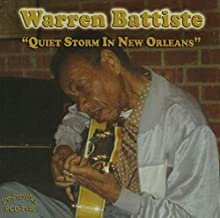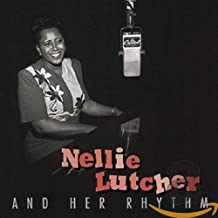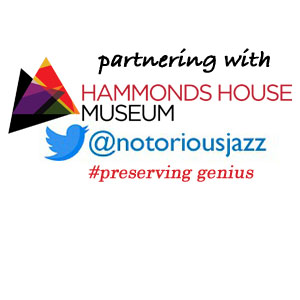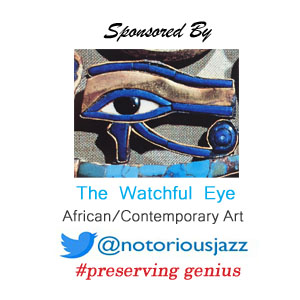
Daily Dose Of Jazz…
Tommy Stewart was born November 19, 1939 in Gadsden, Alabama. He attended Industrial High in Birmingham, Alabama where John T. “Fess” Whatley trained him along with Erskine Hawkins, Dud Bascomb, Paul Bascomb, and Sun Ra. Alvin “Stumpy” Robinson, the band director at Washington Jr High School, was also influential in his development.
Enrolling at Alabama State College and having no way to pay tuition, the problem solved itself when he joined the Bama State Collegians, a dance band that made enough money to fund Stewart’s way through four years of college. He attended Alabama State University, where he directed the Bama State Collegians. Later, he studied jazz arranging at the Eastman School of Music and studied arranging under John Duncan, a classical composer and teacher at Alabama State University.
As an educator he began his teaching career at Fayette High School in St. Clair County Alabama, 1961 to 1963. Moving to Atlanta, Georgia in 1969 he taught in Fayetteville, Georgia, worked for Morris Brown College doing band arrangements and taught jazz and arranged for the Morehouse College band. He also taught band classes at West End High School in Birmingham, Alabama from, and taught A Survey of Popular Music at Georgia State University.
During the 1970s, he worked with Gladys Knight & the Pips, The Tams, Johnnie Taylor, Jackie Moore, King Floyd, Z. Z. Hill, and The Stylistics. He toured as musical director for Johnnie Taylor and for Ted Taylor and went on to record disco in the Seventies with Final Approach, Cream De CoCo, Tamiko Jones, Moses Davis, and his own album.
In 1990, he co-founded the African American Philharmonic Orchestra with founder and conductor John Peek. He moved from Atlanta to Birmingham in 1992. He was a member of the Magic City Jazz Orchestra, Cleveland Eaton, the Alabama All-Stars, the Alabama Jazz Hall of Fame All-Stars, and Ray Reach and Friends, continues to be involved in music. In 1988, he was inducted into the Alabama Jazz Hall of Fame. At 81, trumpeter, arranger, composer, and record producer Tommy Stewart remains involved in the music industry.
More Posts: arranger,bandleader,history,instrumental,jazz,music,record producer,trumpet

Daily Dose Of Jazz…
Satoshi Inoue 井上智 was born on November 12, 1956 in Kobe, Japan and studied at Kyoto’s Fuji School of Music from 1979 to 1981. Between 1981-1988, he led his own groups in Japan.
Moving to New York City in 1989 he studied at The New School for Jazz and Contemporary Music where he met Jim Hall, who has been on the faculty of the university since his senior year.
Over the years, Inoue has toured with jazz greats such as James Moody, James Williams, Cecil Bridgewater, Frank Foster, Slide Hampton, Barry Harris, Jimmy Heath, Arnie Lawrence, Jack McDuff, Junior Mance, Jon Faddis, Akira Tana, The Clayton Brothers and Toshiko Akiyoshi.
His own band has gigged at New York’s top jazz venues, and for twelve years, Inoue has brought American musicians to Japan to conduct fall tours for concerts and workshops, including the Big Apple in Nonoichi festival. His lectures on jazz standards appear monthly in a Japanese jazz magazine called Jazz Life.
Guitarist Satoshi Inoue, who performed together on Hall’s widely used instructional video collection called Jazz Guitar Master Class Volumes 1&2, continues to compose, record and perform.
More Posts: bandleader,guitar,history,instrumental,jazz,music

Daily Dose Of Jazz…
Malcolm Mitchell was born in London, England on November 9, 1926 and was originally taught by Ivor Mairants. In 1947 he was teaching jazz guitar when he formed The Trio with pianist Johnny Pearson and bassist Lennie Bush. At the BBC Maida Vale studios the trio would broadcast live on a Saturday morning.
1948 saw Mitchell become the first British musician to play with Duke Ellington and earn money for doing so. In 1933 the Duke of Windsor had insisted on sitting in on drums with the Ellington Band when it visited Britain but he didn’t get paid for it. Mitchell’s debut with Ellington was equally eccentric in its way.
Throughout the 40s and into the 50s the brutish Musicians’ Union, in tandem with the all-powerful fraternity, Ministry of Works, had a rule which banned American musicians from playing in England. In 1948 the Dizzy Gillespie and Spike Jones Orchestras had to cancel projected tours and the only way Ellington was able to work there was as a variety act without his band. He played piano at the London Palladium and music halls in nine other cities with his trumpeter Ray Nance, allowed in as a dancer and thus “Showbiz”, and his singer Kay Davis weren’t banned. The Union presumably didn’t regard them as musicians.
While the Union Ban was in place the Mitchell Trio, now with Johnnie Valmore Pearson on piano and Teddy Broughton on bass, accompanied other bewildered Americans variety artists including Hoagy Carmichael and Maxine Sullivan when they toured England. During those years he toured eight weeks in Sweden with Stephane Grappelli and Django Reinhardt.
His Mitchell Trio, with pianist Johnny Pearson and Teddy Broughton on bass, became well known supporting U.S. jazzmen and singers touring in the UK. Guitarist, bandleader and educator Malcolm MItchell passed away in Bognor Regis, England on March 9, 1998.
More Posts: bandleader,guitar,instrumental,jazz,music

Daily Dose Of Jazz…
Warren Battiste was born on November 8, 1925 in New Orleans, Louisiana and was taught guitar by his father who played the banjo at Preservation Hall. Completing four year of study at Gruenwald Music School in his hometown, he became proficient not only on that instrument but also bass, banjo, and piano.
He first played with Fats Domino before heading off to New York City for Illinois Jacquet’s band. This gave him a very broad understanding from classic blues to R&B and jazz. Back in New Orleans he played thebest clubs on Bourbon Street, from Preservation Hall and Snug Harbor to the Matador and others.
He appeared in the film Shy People with movie stars Jill Clayburgh and Barbara Hershey. Warren has performed with George Benson, Jimmy McGriff, The Platters and The Inkspots. He went on to teach music at Wequachie High School, Essex County College and the Newark Art Center in New Jersey. He has released three albums as a leader ~ Street Jazz, Just Friends and Quiet Storm In New Orleans, the latter recorded in his 80s.
Guitarist Warren Battiste, who has been recognized with a Lifetime Achievement Award In Jazz from the New Orleans Jazz and Heritage Festival, continues to perform.
More Posts: bandleader,bass,guitar,history,instrumental,jazz,music

Daily Dose Of Jazz…
Nellie Rose Lutcher was born on October 15, 1912 in Lake Charles, Louisiana. The eldest daughter of the 15 children, her father was a bass player and her mother a church organist. She received piano lessons and her father formed a family band with her playing piano. At age 12, she played with Ma Rainey, when her regular pianist fell ill and had to be left behind in the previous town. Searching for a temporary replacement in Lake Charles, one of the neighbors told Rainey that there was a little girl who played in church who might be able to do it.
At 15, Lutcher joined her father in Clarence Hart’s Imperial Jazz Band and in her mid-teens also briefly married the band’s trumpet player. In 1933, she joined the Southern Rhythm Boys, writing their arrangements and touring widely. 1935 saw her moving to Los Angeles, California where she began to play swing piano, and also to sing, in small combos throughout the area. At this point she began developing her own style, influenced by Earl Hines, Duke Ellington and her friend Nat “King” Cole.
Not widely known until 1947 when she learned of the March of Dimes talent show at Hollywood High School, and performed. The show was broadcast on the radio and her performance caught the ear of Capitol Records scout Dave Dexter. Signing to the label she made several records, including The One I Love (Belongs to Somebody Else) and her first hit single, the risqué Hurry On Down.
In 1950, Lutcher duetted with Nat “King” Cole on For You My Love and Can I Come In For A Second. The same year, her records were released in the UK and were actively promoted by radio DJ Jack Jackson. She headlined a UK variety tour, emceed by Jackson, with great success, later returning there to tour on her own.
With an orchestra for the first time, Lutcher recorded The Birth of the Blues and I Want to Be Near You in 1951, but losing her appeal with the record-buying public and was dropped by Capitol the following year. She went on to record, much less successfully, for other labels including Okeh, Decca and Liberty, and gradually wound down her performance schedule.
In 1952, Lutcher was contacted to perform on a happy new years television special, however, after she finished her song it was revealed that she was on the set of and the honoree on a This Is Your Life episode.
Pianist and vocalist Nellie Lutcher, most recognizable for her diction and exaggerated pronunciation and was credited as an influence by Nina Simone among others, passed away in Los Angeles on June 8, 2007, aged 94.
More Posts: bandleader,history,instrumental,jazz,music,piano,vocal



